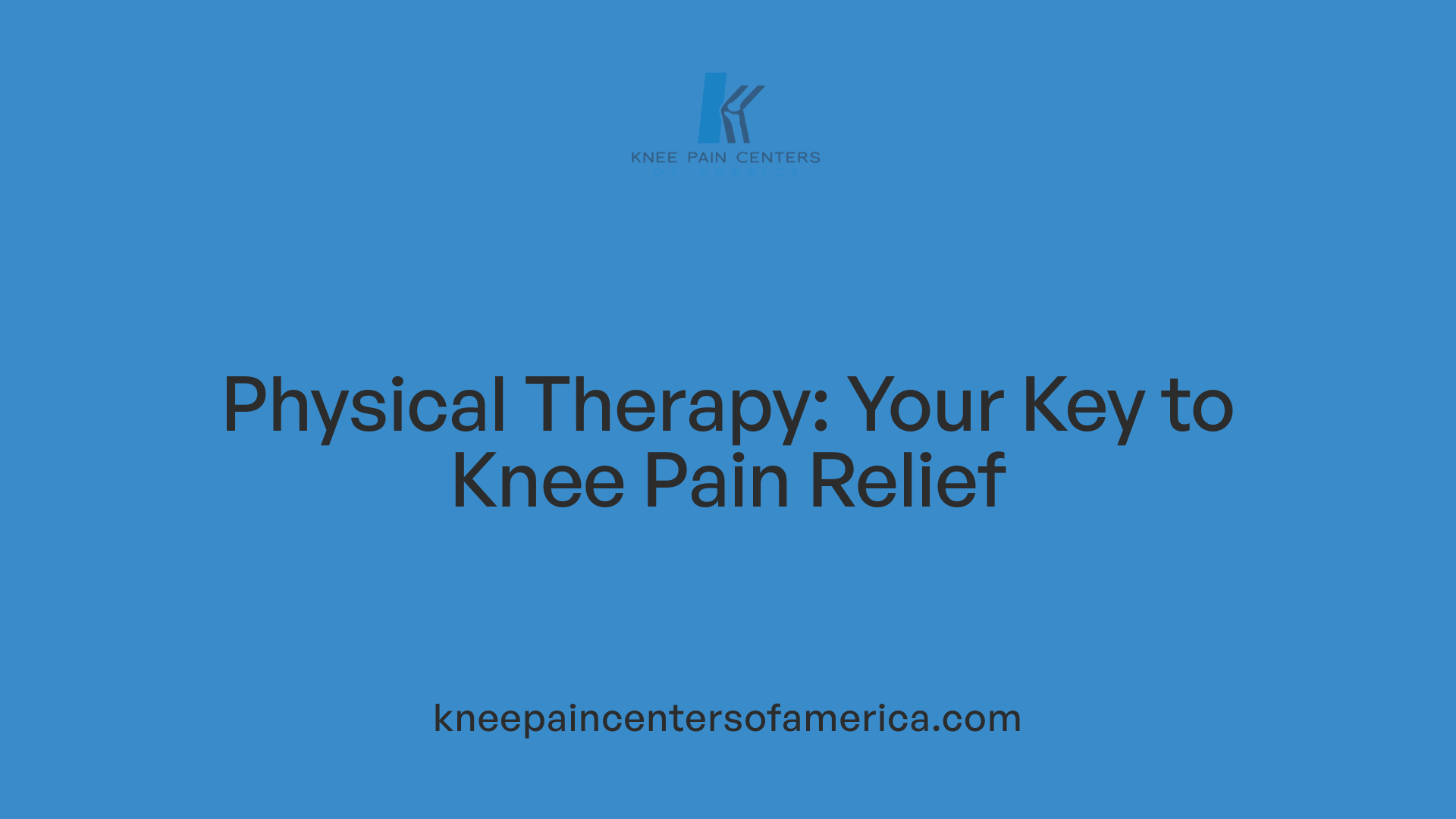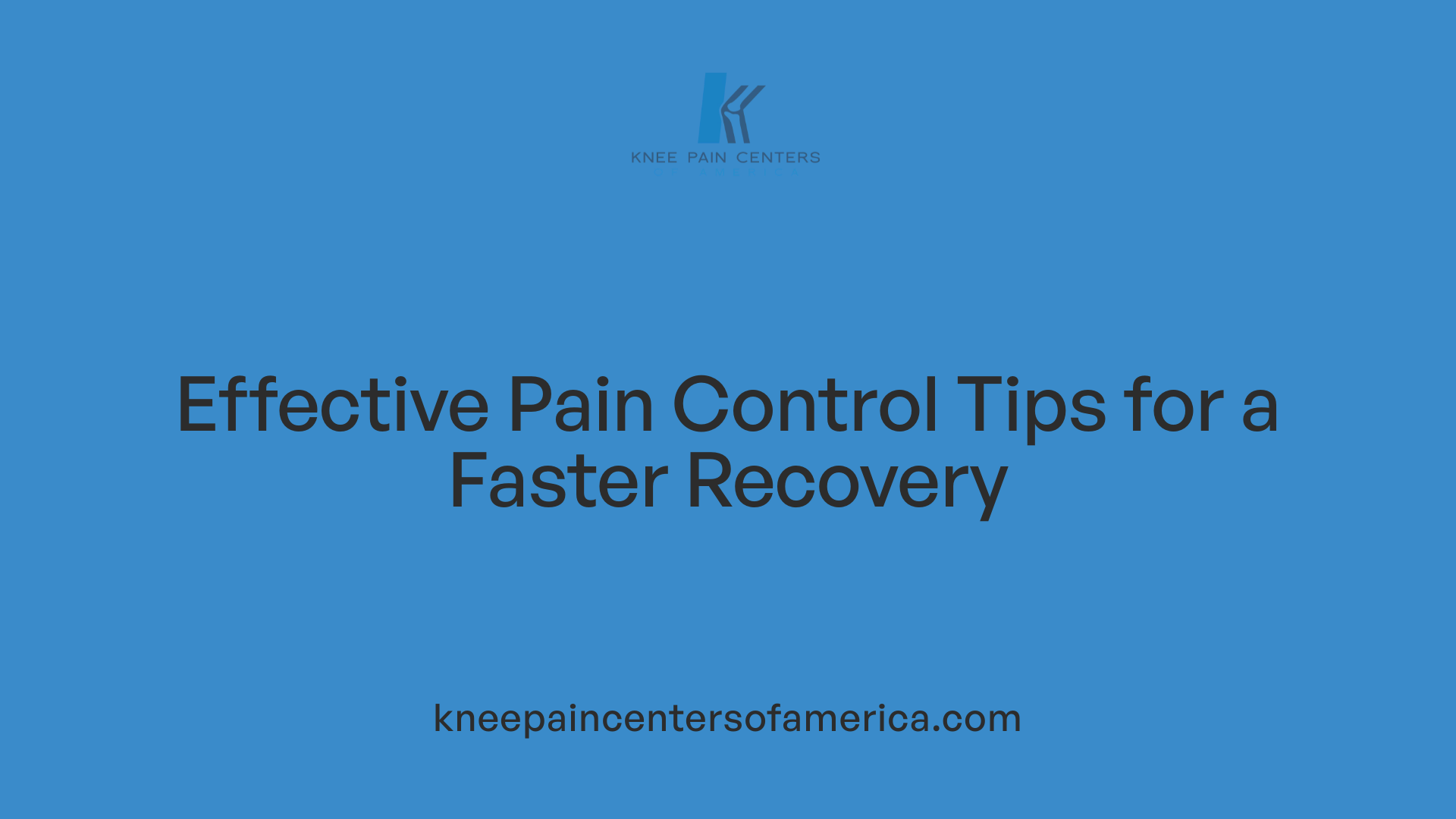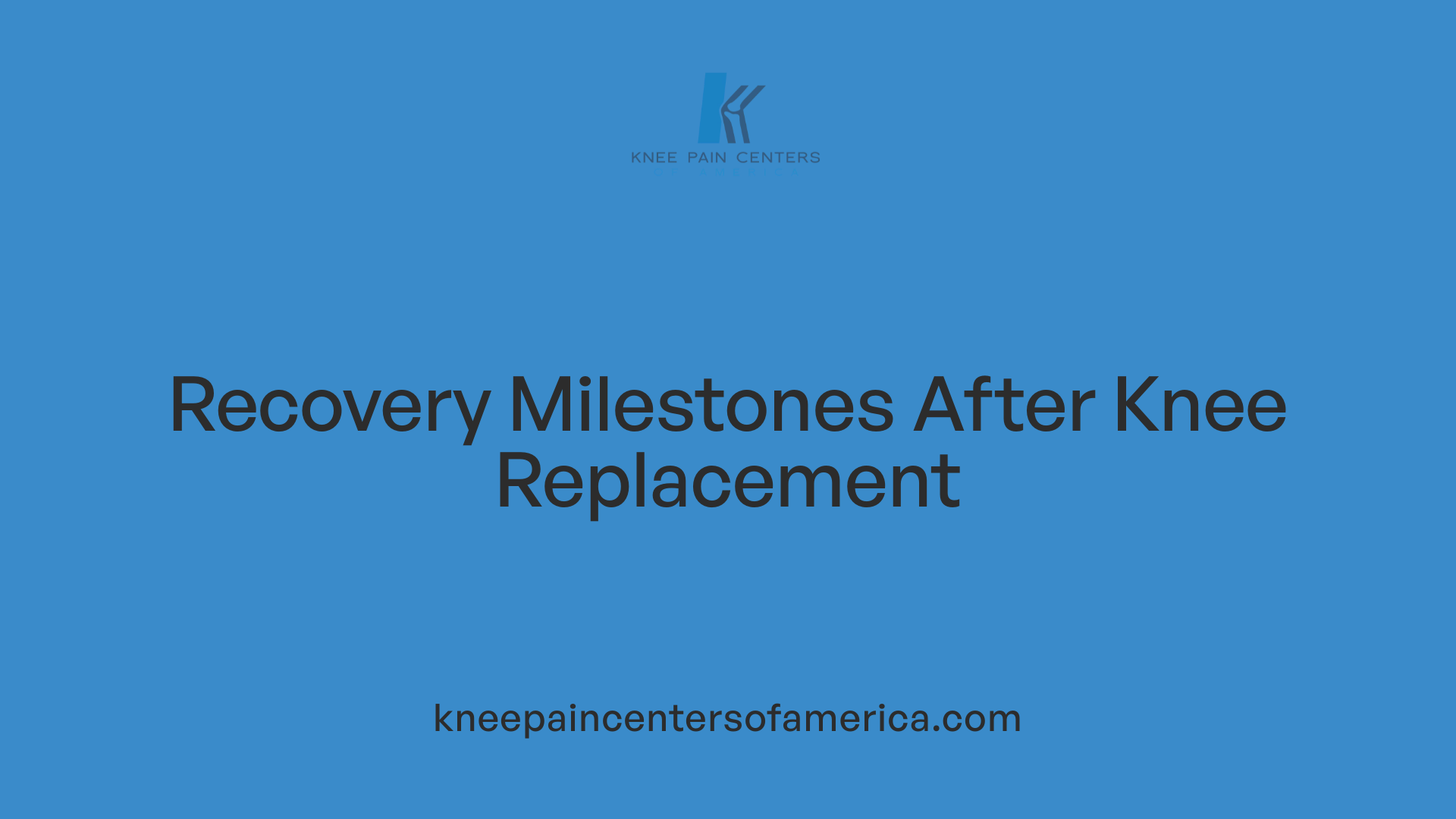Understanding Recovery from Knee Pain Treatments
Knee pain, often stemming from conditions like osteoarthritis, affects millions worldwide and impacts daily life significantly. Treatments vary widely, ranging from non-surgical approaches to surgical interventions such as knee replacement. Understanding the expected recovery periods and what each treatment entails is crucial for patients and caregivers to set realistic expectations and plan for rehabilitation. This article explores the typical timelines for recovery from various knee pain treatments, the role of physical therapy, pain management strategies, and emerging medical therapies, offering a comprehensive guide for those embarking on their path to relief.
Non-Surgical Treatments and Their Recovery Timelines

What are the most effective non-surgical treatments for knee osteoarthritis?
Non-surgical treatment options for knee osteoarthritis focus on symptom relief and slowing disease progression. Physical therapy plays a major role by strengthening thigh and calf muscles, improving flexibility, and increasing the knee's range of motion. Weight management is also critical as reducing excess body weight decreases stress on the knee joint.
Medications such as nonsteroidal anti-inflammatory drugs (NSAIDs) and acetaminophen are frequently used to control pain and inflammation. Supplements like glucosamine sulfate and hyaluronic acid injections can also provide temporary joint lubrication and comfort. Corticosteroid injections may help briefly reduce swelling and pain in more severe cases.
Supportive measures include wearing braces or orthotic devices to stabilize the knee and using ice, heat, or electrical stimulation for pain relief. A low-impact exercise regimen that includes walking, cycling, swimming, or water aerobics is beneficial for maintaining joint function and mobility.
Recovery periods associated with non-surgical approaches
Non-surgical treatments typically involve ongoing management rather than a fixed recovery period. Physical therapy programs usually last two to three months but may continue longer depending on patient progress. Return to daily activities like walking and light exercise can occur quickly, often within days to weeks of initiating therapy.
Injection therapies provide symptom relief that varies from a few weeks to several months. Weight loss results depend on individual effort and may take several months to achieve meaningful joint load reduction.
Overall, these approaches aim to maintain knee function and delay or prevent the need for surgery rather than provide an outright cure.
Role of lifestyle modifications and medications in symptom management
Lifestyle changes, such as quitting smoking and removing home hazards, contribute positively to joint health and recovery. Regular low-impact exercise combined with a healthy diet helps control weight and improves muscle support around the knee.
Medications used judiciously help manage pain and inflammation, facilitating participation in physical therapy and daily activities. Patient education and adherence to rehabilitation protocols enhance outcomes and quality of life.
Together, non-surgical treatments form a comprehensive plan to manage knee osteoarthritis effectively with minimal disruption to daily living.
Physical Therapy: The Cornerstone of Managing Knee Pain

What role does physical therapy play in managing knee pain due to osteoarthritis?
Physical therapy is fundamental in managing knee pain caused by osteoarthritis. It strengthens the muscles around the knee — especially the quadriceps and hip muscles — to better support the joint and reduce pressure on the damaged cartilage. Through targeted exercises, physical therapy also improves flexibility, joint range of motion, and functionality, helping to relieve stiffness and discomfort.
Beyond exercises, physical therapy includes manual therapy techniques, activity modification advice, and the use of supports or braces to decrease pain and optimize joint use. Engaging early and consistently in physical therapy can slow the progression of osteoarthritis, lessen reliance on medications, and may delay or prevent the need for surgery.
Typical therapy duration and exercises involved
Physical therapy usually spans two to three months or longer, with sessions often held once or twice weekly. Progress is regularly evaluated every four to six weeks to adjust the treatment plan.
Common exercises prescribed include:
- Straight leg raises
- Quadriceps sets
- Heel slides
- Seated knee flexion
- Step-ups
- Stationary cycling
These exercises focus on rebuilding muscle strength in the thighs and calves, improving knee flexibility, and restoring range of motion.
Physical therapy's impact on mobility and delaying surgery
By reducing pain and improving function, physical therapy significantly enhances mobility and allows patients to maintain an active lifestyle. Successful physical therapy can delay the progression of osteoarthritis and postpone surgical interventions such as knee replacement.
Its role in rehabilitation after surgery is also critical; it helps patients regain strength, supports early mobilization, and contributes to the restoration of normal movement patterns.
Overall, physical therapy empowers patients to manage knee osteoarthritis effectively, preserves joint health, and improves quality of life.
Pain Management Strategies and Their Role in Recovery

Types of Medications Used Post-Treatment for Knee Pain
Pain control after knee replacement surgery involves a variety of medications tailored to each patient’s needs. Common options include prescription pain relievers, nonsteroidal anti-inflammatory drugs (NSAIDs), and acetaminophen. During surgery, spinal anesthesia and nerve blocks can provide initial relief for up to 24-36 hours. Postoperatively, doctors may also use nerve pain medications, antidepressants, and opioids for adequate symptom management.
How These Medications Alleviate Symptoms
NSAIDs are particularly effective because they reduce inflammation within the joint which contributes to pain. They work by blocking enzymes that produce inflammatory chemicals, easing both pain and swelling. Acetaminophen complements these effects by acting primarily as a pain reliever, though it lacks anti-inflammatory properties. Nerve blocks and opioids target pain signals directly, helping to break the transmission of pain to the brain.
Multimodal Pain Management Approaches
A multimodal strategy combines several treatments to enhance pain relief while minimizing side effects. This may include using nerve blocks during surgery, scheduled NSAIDs and acetaminophen, and cautious opioid use when necessary. Additionally, non-medication methods like icing the knee, elevating the leg, and physical therapy play a critical role in controlling discomfort and promoting healing.
Impact on Recovery Timelines
Effective pain management enables patients to begin physical therapy and movement early, which is essential for restoring joint function. Most patients start walking with assistance within hours after surgery, and by controlling pain, they can progress to more active rehabilitation within weeks. This approach supports returning to daily activities often within six weeks and contributes to achieving full recovery in about six months to a year.
When Surgery is Necessary: Knee Replacement and Recovery Expectations

When is knee replacement surgery considered for osteoarthritis patients?
Knee replacement surgery is typically recommended when osteoarthritis symptoms become severe and unmanageable with conservative treatments like exercise, weight management, and medications. It is especially considered when pain, stiffness, and functional limitations significantly impair daily activities and quality of life. Surgery is most beneficial when there is advanced cartilage wear and joint damage. For younger patients, surgery may be delayed due to prosthesis lifespan and risk of requiring future revisions. Ultimately, the decision is tailored to individual circumstances, balancing symptom severity, treatment response, and surgical risks.
What is the typical hospital stay and immediate postoperative care?
Patients undergoing total knee replacement usually stay in the hospital for 1 to 3 days, with some hospitalizations extending up to 7 to 10 days depending on individual needs. Post-surgery, early mobilization begins quickly—with patients often walking with a walker within hours or by the next day. Immediate care involves icing the knee, elevating the leg, maintaining wound hygiene, and starting physical therapy to regain motion and strength. Pain is managed through a combination of prescription medications, nerve blocks, and anti-inflammatory drugs tailored by the surgical team.
What is the timeline to resume daily activities and work?
Most patients can resume light daily activities within six weeks after surgery. Transitioning from a walker to a cane generally occurs by this time, with many able to walk without aids around six weeks postoperatively. Return to sedentary work typically happens within 4 to 6 weeks, while more physically demanding jobs may require 2 to 3 months off. Full recovery, including return to sports or active lifestyles, can take anywhere from six months to a year, depending on individual factors and adherence to rehabilitation.
What range of motion and functional outcomes can be expected post-surgery?
Long-term range of motion after knee replacement usually reaches about 100 to 110 degrees, enabling patients to perform a wide variety of activities such as walking, cycling, swimming, and light exercise. High-impact activities like jogging and contact sports are generally not recommended to prevent implant strain. Successful surgery can greatly reduce pain and improve joint function, allowing many patients to return to an active lifestyle with improved mobility and quality of life within months.
| Aspect |
Details |
Notes |
| Surgery consideration |
Severe symptoms unmanageable by conservative methods |
Especially with advanced cartilage damage |
| Hospital stay |
Usually 1-3 days, up to 7-10 days in some cases |
Early mobilization starts within hours |
| Immediate post-op care |
Pain management, icing, elevation, physical therapy |
Focus on wound care and motion restoration |
| Activity resumption |
Light activities at 6 weeks, work 4-12 weeks |
Full recovery up to 1 year for physical activities |
| Range of motion |
100-110 degrees long term |
Enables walking, cycling, swimming; high-impact sports discouraged |
Timeline of Recovery After Knee Replacement Surgery

Hospital stay duration and early rehabilitation
Patients typically remain in the hospital for about 7 to 10 days following knee replacement surgery. Rehabilitation begins immediately during the hospital stay, focusing on early mobilization to improve mobility, strength, and range of motion of the artificial joint. Patients often start walking with a walker within hours to a day after surgery, and wound healing generally completes within 10 to 15 days when stitches or staples are removed.
Physical therapy stages and mobility milestones
Physical therapy is a cornerstone of recovery, continuing through the hospital stay and extending into outpatient or at-home sessions. Therapy generally lasts for several months, with patients participating once or twice weekly. Key mobility milestones include transitioning from walker to cane within the first six weeks and walking independently soon thereafter. Muscle recovery to support the joint typically takes about six weeks, while full functional strength builds gradually over months.
Expected full recovery period and activity recommendations
While many patients resume most usual activities within six weeks, full recovery from knee replacement can take up to a year. During recovery, patients are encouraged to engage in low-impact exercises such as walking, swimming, cycling, and light aerobics. High-impact activities like jogging and contact sports are discouraged to avoid implant strain. Most individuals can return to work between two to three months post-surgery depending on job demands, with sedentary roles often requiring less time.
Risk monitoring and postoperative care essentials
Successful recovery requires vigilant postoperative care including icing and elevating the knee, maintaining incision hygiene, and following prescribed exercises. Pain management involves a combination of medications tailored by the surgeon, alongside nerve blocks or anti-inflammatory drugs. Patients must be monitored for signs of infection, blood clots, or unusual pain. Home modifications and assistive devices can support safety and comfort during healing.
| Recovery Phase |
Duration |
Key Activities & Recommendations |
| Hospital Stay & Rehab |
7-10 days |
Early mobilization, wound care, pain management |
| Early Physical Therapy |
0-6 weeks |
Walker to cane transition, gentle range-of-motion exercises |
| Intermediate Physical Therapy |
6 weeks to 3 months |
Strengthening, increasing activity level |
| Return to Work & Activities |
2-3 months |
Gradual resume of daily activities, low-impact exercises |
| Full Recovery Period |
Up to 12 months |
Complete muscle recovery, return to moderate activity |
Minimally Invasive Procedures and Their Recovery Durations
Arthroscopy and Knee Osteotomy Recovery Timelines
Minimally invasive procedures like knee arthroscopy and knee osteotomy offer effective treatment options with shorter recovery periods compared to total knee replacement. Arthroscopy involves small incisions and specialized instruments to address lesions within the knee joint and typically allows patients to be discharged the same day. Most individuals can resume light activities within days to a week, with full recovery potentially taking several weeks to a few months.
Knee osteotomy, which realigns bones to relieve joint pressure, has a longer recovery of about 3 to 6 months but can delay the need for total knee replacement surgery.
Outpatient Procedures and Early Return to Light Activities
Arthroscopy is often performed as an outpatient procedure, allowing patients to go home after a brief postoperative surveillance of a few hours. Thanks to limited invasiveness, the procedure supports an early return to light activities, enabling patients to regain mobility quickly while minimizing hospital stays.
Early mobilization and physical therapy remain crucial during recovery to rebuild strength and maintain flexibility.
Comparison with Total Knee Replacement Recovery
Total knee replacement requires a longer hospital stay of 1 to 3 days and a recovery timeframe ranging from 6 months up to a year for full healing. Patients usually return to work within 4 to 6 weeks if their job is sedentary. In contrast, minimally invasive procedures like arthroscopy and osteotomy provide quicker rehabilitation and earlier return to daily activities but are generally suited for less severe cases.
Emerging Medical Treatments for Knee Osteoarthritis
Beyond arthroscopy and osteotomy, several emerging minimally invasive treatments are being developed to manage knee osteoarthritis. These include genicular artery embolization, which targets inflammation by reducing blood flow to affected areas, platelet-rich plasma (PRP) injections that promote cartilage repair, and viscosupplementation using hyaluronic acid to improve joint lubrication. Regenerative therapies such as stem cell treatments offer promising potential to stimulate tissue healing, presenting valuable alternatives or complements to surgery.
| Procedure |
Hospital Stay |
Recovery Duration |
Activity Resumption |
| Arthroscopy |
Outpatient (hours) |
Weeks to months |
Light activities within days to a week |
| Knee Osteotomy |
1-3 days (varies) |
3-6 months |
Gradual increase, delays total replacement |
| Total Knee Replacement |
1-3 days |
6 months to 1 year |
Return to sedentary work in 4-6 weeks |
Supporting Recovery: Home Care, Modifications, and Wellness Approaches
Importance of Home Modifications and Assistive Devices During Recovery
To ensure safety and promote healing after knee replacement surgery, adjusting the home environment is crucial. Removing trip hazards like loose rugs, installing grab bars, and using assistive devices such as walkers or canes can help patients move safely during their recovery period. These modifications reduce the risk of falls or injuries that could compromise the healing process.
Pain Relief Techniques Including Ice, Heat, and Massage
Effective pain management includes a combination of methods. Icing and elevating the knee help reduce swelling and discomfort, especially in the early postoperative phase. As recovery progresses, gentle heat application and massage therapy can improve circulation, ease muscle stiffness, and enhance flexibility around the knee joint.
Role of Wellness Programs Like Acupuncture and Tai Chi
Wellness approaches such as acupuncture, acupressure, tai chi, and meditation complement traditional therapies by reducing pain, decreasing stress, and supporting emotional well-being. These programs encourage relaxation and may accelerate recovery by improving circulation and promoting holistic healing.
Monitoring Complications and Maintaining Safety
Close observation during recovery is essential to detect signs of infection, abnormal pain, or blood clots promptly. Maintaining incision hygiene and following prescribed exercises while staying alert for complications helps ensure a safe and effective recovery pathway.
Setting Realistic Expectations for Recovery and Life After Knee Pain Treatment
Recovery from knee pain treatments varies widely depending on the type and severity of the condition, as well as the chosen treatment modality. Non-surgical approaches often involve ongoing management through physical therapy, lifestyle changes, and medication, with recovery marked by gradual improvement over months. Surgical interventions like knee replacement demand a more extended recovery timeline, frequently lasting six months to a year, with significant milestones such as walking unaided and returning to work occurring within weeks to months. Emerging minimally invasive options offer shorter recovery periods and promising results. Throughout all treatments, a combination of pain management, physical therapy, home support, and mindful monitoring of complications is essential to optimize outcomes and enhance quality of life. Patients should collaborate closely with healthcare providers to tailor recovery plans that align with their individual needs and goals.
References